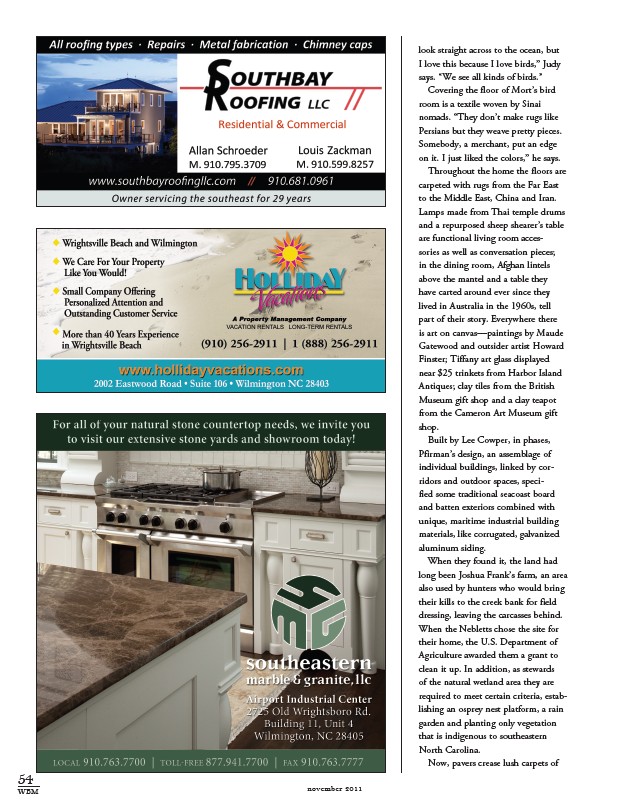
54
WBM november 2011
look straight across to the ocean, but
I love this because I love birds,” Judy
says. “We see all kinds of birds.”
Covering the floor of Mort’s bird
room is a textile woven by Sinai
nomads. “They don’t make rugs like
Persians but they weave pretty pieces.
Somebody, a merchant, put an edge
on it. I just liked the colors,” he says.
Throughout the home the floors are
carpeted with rugs from the Far East
to the Middle East, China and Iran.
Lamps made from Thai temple drums
and a repurposed sheep shearer’s table
are functional living room accessories
as well as conversation pieces;
in the dining room, Afghan lintels
above the mantel and a table they
have carted around ever since they
lived in Australia in the 1960s, tell
part of their story. Everywhere there
is art on canvas—paintings by Maude
Gatewood and outsider artist Howard
Finster; Tiffany art glass displayed
near $25 trinkets from Harbor Island
Antiques; clay tiles from the British
Museum gift shop and a clay teapot
from the Cameron Art Museum gift
shop.
Built by Lee Cowper, in phases,
Pfirman’s design, an assemblage of
individual buildings, linked by corridors
and outdoor spaces, specified
some traditional seacoast board
and batten exteriors combined with
unique, maritime industrial building
materials, like corrugated, galvanized
aluminum siding.
When they found it, the land had
long been Joshua Frank’s farm, an area
also used by hunters who would bring
their kills to the creek bank for field
dressing, leaving the carcasses behind.
When the Nebletts chose the site for
their home, the U.S. Department of
Agriculture awarded them a grant to
clean it up. In addition, as stewards
of the natural wetland area they are
required to meet certain criteria, establishing
an osprey nest platform, a rain
garden and planting only vegetation
that is indigenous to southeastern
North Carolina.
Now, pavers crease lush carpets of